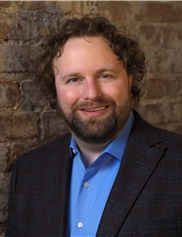Grants Funded
Grant applicants for the 2024 cycle requested a total of nearly $3 million dollars. The PSF Study Section Subcommittees of Basic & Translational Research and Clinical Research evaluated more than 100 grant applications on the following topics:

The PSF awarded research grants totaling over $650,000 dollars to support more than 20 plastic surgery research proposals.
ASPS/PSF leadership is committed to continuing to provide high levels of investigator-initiated research support to ensure that plastic surgeons have the needed research resources to be pioneers and innovators in advancing the practice of medicine.
Research Abstracts
Search The PSF database to have easy access to full-text grant abstracts from past PSF-funded research projects 2003 to present. All abstracts are the work of the Principal Investigators and were retrieved from their PSF grant applications. Several different filters may be applied to locate abstracts specific to a particular focus area or PSF funding mechanism.
Mechanism of Hemangioma: Role of Follicle-Stimulating Hormone
Reid Maclellan MD, MMSc
2014
Children's Hospital Boston
National Endowment for Plastic Surgery Grant
Cranio / Maxillofacial / Head and Neck
The goal of this project is to understand the mechanism by which infantile hemangioma (IH) grows. This will inform us about the fundamental process of vascular morphogenesis and, importantly, identify specific pathways for which targeted therapies can be developed to improve the lives of children affected by IH and other vascular diseases. IH is the most common tumor of childhood. It rapidly enlarges after birth and can cause significant morbidity: bleeding, ulceration, infection, destruction of important structures, blockage of vision or breathing, organ failure, and death. Currently, the mechanism for IH is unknown and there is no cure for the lesion. Drugs may be given in an attempt to slow the growth of IH, but these medications are associated with significant morbidity and their mechanism of action is unknown.
We propose the novel hypothesis that follicle-stimulating hormone (FSH) is responsible for the mechanism of IH. The secretion of the FSH exactly mirrors the growth cycle of IH, and its elevation in infancy correlates with an increased risk of having IH. Our preliminary data has shown that IH uniquely expresses the receptor for FSH, in contrast to other normal and pathological vascular tissues. The goal of these studies is to test whether FSH (or its antagonists) affects the growth of IH. Our first aim will test the effects of FSH on the angiogenic/vasculogenic properties of human-derived IH cells. Cell based assays will be used to determine whether FSH causes human IH endothelial cells (HemECs), pericytes (HemPCs), or stem cells (HemSCs) to exhibit a phenotype that promotes neovascularization. Our second aim will test whether systemically administered FSH (or antagonists) affects the growth of IH in vivo. A validated murine model of IH will be created by implanting human-derived IH stem cells subcutaneously into the backs of immunodeficient mice. The effects of FSH on the size, blood flow, and microvessel density on the IH implants will be tested.
 Reid A. Maclellan, MD, MMSc is a researcher at Boston Children’s Hospital. He received his BS from the University of Alabama at Birmingham and his MD from the University of Alabama School of Medicine. He completed a general surgery internship at the University of Tennessee College of Medicine Chattanooga. Dr. Maclellan then completed a plastic surgery research fellowship at Boston Children’s Hospital. During this time, he earned a Master in Medical Sciences Degree in translational research at Harvard Medical School. Dr. Maclellan is currently an Instructor of Surgery at Harvard Medical School and Associate Director of the Department of Plastic and Oral Surgery research laboratory. His research focus is in the fields of vascular anomalies and lymphedema.
Reid A. Maclellan, MD, MMSc is a researcher at Boston Children’s Hospital. He received his BS from the University of Alabama at Birmingham and his MD from the University of Alabama School of Medicine. He completed a general surgery internship at the University of Tennessee College of Medicine Chattanooga. Dr. Maclellan then completed a plastic surgery research fellowship at Boston Children’s Hospital. During this time, he earned a Master in Medical Sciences Degree in translational research at Harvard Medical School. Dr. Maclellan is currently an Instructor of Surgery at Harvard Medical School and Associate Director of the Department of Plastic and Oral Surgery research laboratory. His research focus is in the fields of vascular anomalies and lymphedema.